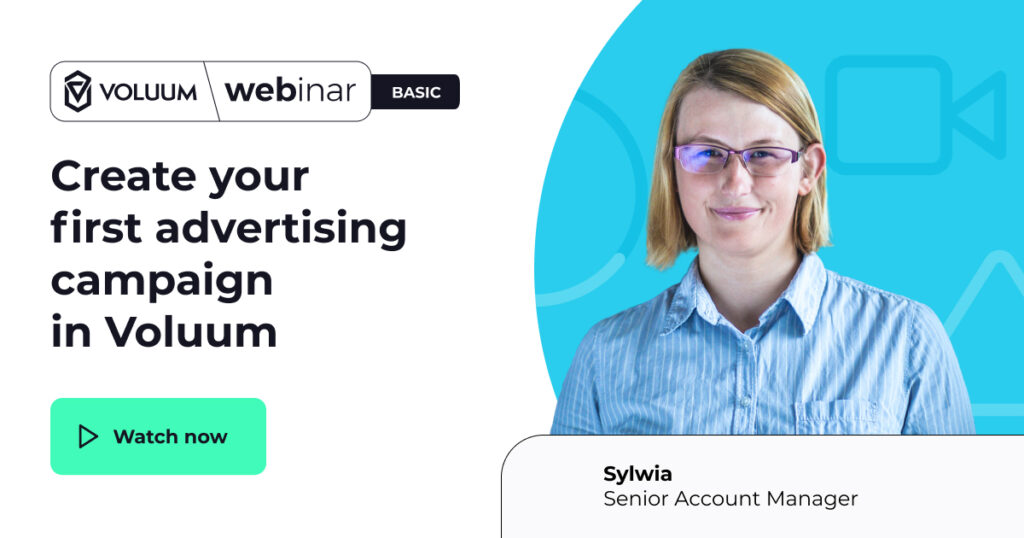Some time ago I googled “best cameras” while looking for a Christmas gift for my dad. For a while, every ad I saw on Facebook, Google, and pretty much everywhere else was photography gear related. I’m sure this happened to you too, and you felt just as weirded out. There’s a simple explanation though. Our online activity is being monitored. Every time we engage with content, information about the nature of that interaction is sent to an interested party. Our online journeys are simply tracked.If you ever wondered what it means exactly and how ad tracking works, keep reading.
What is ad tracking?
It happens when companies or brands follow you around using different tracking methods (we’ll get what they are later) to gain insights into your behavior. To serve you more relevant content, aka better-suited ads. If you find that annoying, think about how many times you found a store on Instagram that was suspiciously accurate to your browser history. Annoying but it works.
So if we were to write a proper definition it could sound something like this:
“Ad tracking is a data collection process, to get user insights on the performance of online advertising campaigns”
Sounds like some intense Internet magic but the reality is less magical and we’re about to break it down for you.
When did it start?
I could give you the whole rundown of the history of Internet advertising. We could go through it year by year, but let’s face it, that’s not exactly why you came here.
Nevertheless, I’m gonna give you a short historical context. What for? You may or may not think that online advertising is the invention of Google or Facebook and is no older than 20 years. Even that sounds crazy. But if that’s your idea of its origin you’re in the wrong.
The first ads came out about 28 years ago. In 1994.
That’s when Wired magazine’s online off-shoot called HotWired first introduced the world to…banner ads. Since this was a digital publication, setting aside a portion of the website to sell to advertisers was the magazine’s way of earning revenue to pay its writers. Very similar to how print editions hold space for ads, right? HotWired called it the banner ad and charged an upfront cost to occupy the space for a set period.
AT&T took HotWired up on its offer and paid $30,000 for its ad over 3 months, and it enjoyed a click-through rate of 44%. To give it some perspective 28 years later CTR is on average closer to 0.06%
That’s how it began. Soon after, digital agencies started offering services like identifying websites’ ideal customers so advertisers could place their ads in places visited by their potential clientele. ROI tracking tools began improving, and pop-ups came around. With each new platform, new ways of advertising, ad formats, and reaching the right audience emerged. And so began the big move from offline to online content.
The marketing shift from traditional media to digital is easily discernible when we take a look at the average budgets allocated to each of the strategies or the average cost of offline vs. online ads. According to Wordstream’s statistical summary of marketing habits, 72% of overall marketing budgets are put toward digital marketing, and 55% of all marketing is done online. Last year’s total spend on digital advertising came to $436B and the expenditure on offline advertising came to be less than half of that at only $196B.
No wonder, since the average person spends a daily average of about 7 hours online.
So what’s crucial here: online advertising is not the evil solution of big corporations that want to feed off your sensitive information and steal your identity – but rather a sign of advertising real estate that has moved to the internet.
Come on, when was the last time you bought a newspaper? Even if you do buy one, you’ll be targeted with ads the same, just less precisely. You don’t have to love the ads you see but remember that thanks to them you get to enjoy a lot of free content.
And better-targeted ads benefit both you (the user), and the companies. How? Better targeting means creating ads that work, and that leads to more revenue. Revenue allows platforms like HotWired to serve you free articles but pay its employees.
Who is tracking?
This one is very simple. If your work revolves around advertising offers – you should be tracking. If you’re a media buyer – you should be tracking. The same goes for brand owners, website owners, and performance or affiliate marketers.
So really the details of what you do, don’t matter as much. But if you’re putting out ads somewhere online, and your business depends on the advertising, tracking those ads needs to be implemented as a strategy right now.
The benefits of tracking

We know what ad tracking means when it started, and now it’s time for the big W.
Why track at all?
Maybe you’ve heard the saying: “You can’t improve what you can’t measure.”
That pretty much sums up why you should track ads in the first place. If you’re in advertising, your business is going to depend heavily on performance. Any time something changes it’s time to turn to your data to figure out where it can be optimized – but that’s not all the reason, oh no.
Creating campaigns that resonate
As marketers, we’re nothing without our audience, especially our audience’s engagement. Creating campaigns based on what you “think” will work is a solution suited only for first-time publishers, but is a crime when used as a long-term plan. By tracking you get insight into what works with your clients.
Less waste in ad spend
Sadly, many businesses fail to review their campaigns after the initial run, meaning they spend money where money doesn’t have to be spent. Because even if a campaign is successful in the first few days or weeks, performance can nosedive within hours. Without realizing it, the budget is wasted on poor-quality traffic. But with tracking you can take a proactive approach with your campaigns, protect your budget, and adjust it to what converts.
Conversion boost
Tracking helps you achieve your conversion goals. In fact, without tracking you don’t really even know how, why or from which channels you’re actually reaching (or not reaching) those goals. With a data-focused approach, you can optimize your conversion rates more easily. Whether that means more purchases, leads, app installs, and so on.
Better performance
Tracking, and analyzing reports leads to one thing – better performance. When you know what your audience responds to, you can shift your advertising dollars to more profitable campaigns, and optimize existing ones to better speak to your customer segments. And if it comes to it, cut those out that simply aren’t delivering which is another important aspect of boosting performance.
Bot prevention
Sadly, not all traffic is legit. Your ads are susceptible to bot activity resulting in large budgetary losses which most argue is a form of straight-out fraud. But what can you do to prevent your ads (and budget) from falling victim? Tracking helps you detect suspicious activity, like conversion times that are too fast to be human. Also, professional trackers like Voluum offer built-in solutions to protect your business.
Scaling
Tracking helps you take control of your performance by measuring it and effectively by helping you optimize. Transitioning to a larger scale is made easier through tracking. Once you learn which solutions work best, scaling your business – and hopefully taking on more profitable projects – becomes not only an easier process but one that is backed by numbers and an informed decision.
A/B Testing
Do you work with multiple landers or offers? Or maybe you have an idea to revamp your lander but you’re not sure it’s going to work? Well, A/B testing is the answer. By comparing the performance of your landers, discerning which one works best is simple. Basically, all aspects of your marketing funnel can be A/B tested – and they should be. Continuously.
And Voluum even lets you automate the process with cool features like Traffic Distribution AI.
Automation
Tracking your ads is a lot of work. Manually optimizing them also qualifies as a ton of effort. Tracking with a professional tool like Volum (which is highly advisable) gives you access to a certain toolkit designed to take the load off of you. We call it Automizer, you can rely on it to automate certain tasks and enable you to work on your campaigns in a single platform instead of jumping back and forth between your traffic source, tracker, and affiliate network. Read here on what else Automizer has to offer.
More granular ad delivery
Tracking, especially with a professional tool gives you access to granular reporting. Like in Voluum, where each recorded event is associated with 30+ data points with several options for drill-down reporting and groupings. Access to such details means you get to deliver ads in a precise way to the exact audience that will respond to it – and convert. A better understanding of your customer behavior simply equals generating higher quality leads and profits.
Wait..but how does ad tracking work?

Tracking is all about gathering and managing information. What is necessary for tracking is to identify a user across pages by assigning them a unique identifier. The identifier has different names across platforms – in the case of Voluum, it’s the click ID. Next, tracking requires that additional data about the user is recorded like device type or language. And finally, user-generated data such as a click.
There are a couple of methods advertisers can deploy to gather the information they’re after. Each method is different in how it goes about collecting information. Here’s the breakdown.
Redirect method
This method relies on redirects through a tracking domain to record data. So in this case the users’ journey looks like this:
Visitor clicks on an ad ➡️Visitor goes through a tracking domain to a landing page set in Voluum ➡️ Visitor clicks the CTA button ➡️Visitor goes through a tracking domain again and Voluum redirects them to the offer.
So the tracking URL looks very similar to any regular URL, with one exception: it has a tracking parameter added to it. It could look like this:
userid={clickid}
What does it do? The tracking parameter essentially carries information to the target website. Redirecting through a tracking domain registers the information from parameters (mainly a click ID) and takes the visitor to the actual page. So each time somebody clicks on your URL, you’ll know.
When is it useful?
If you’re running a PPC (pay-per-click) campaign, sending an email, or putting an advertisement on another website, tracking URLs are ideal for calculating the number of visits, leads, and conversions you’ve generated from your hard work.
This method is also easy to implement, enables you to rotate landers or offers, and doesn’t require the offer pages to be edited so you can simply work with the one coming from your affiliate network.
Sadly this method won’t work for Google and Facebook as they require that each destination URL always goes to the same place directly.
Direct tracking
This method uses a script that needs to be implemented on the page to make requests to the tracker. When someone visits the page, the script loads and a signal is sent back to your tracking tool with click ID.
When is it useful?
These scripts can also be useful for collecting the same data as with a redirect method.
Voluum has re-engineered this method to also make it cookie-safe, which means when 3rd party cookies are blocked, this method will rely on 1st party ones and continue to work.
What is more, direct tracking is compliant with Facebook and Google ads.
Lastly, this method is faster than the redirect.

I wish I meant cookies as in the ones with chocolate. Not this time 🙂
Using cookies is not a tracking method on its own, but they’re definitely present in both methods. For the redirect method, cookies serve as a backup solution if the referrer data is lost. Sometimes, people will use the term cookie-based tracking but what they mean is actually the direct method of tracking. The tracking script gets the user ID from a cookie.
If I were to give you a brief definition of cookies, I’d say they are text files containing small pieces of data that enhance the web experience. They store data such as login details, language settings, or even the contents of your shopping cart.
Remember, in the beginning, I mentioned the story about looking for a camera? Seeing the same kind of ads over and over was a result of my identification information being stored in a cookie and read by ad networks. These networks already knew my purchasing intent, and thanks to the ID, they were able to connect the dots and continue to serve me these ads.
There are generally two kinds of cookies: 1st and 3rd party.
Cookies are treated as 1st party when they point to the same page as the one you are visiting. If they’re pointing to a different domain then they’re treated as 3rd party.
They are surrounded by many concerns regarding privacy and data protection, and so came many reactions from large Internet stakeholders like Google and Apple.
I’m sure you’ve heard about the planned killing of 3rd party cookies (pardon the brutal language). After delaying it several times Google announced the phase-out will officially happen in 2024. What does that even mean for advertisers?
The concern over 3rd party cookies is that user data is shared with third-party platforms, which brings up safety issues. Many users don’t know what their information is used for. There’s a thin line between legitimate advertisers’ interest to serve better ads, which help to fund free content users got used to having access to, and shady, privacy-infringing techniques
Just to make it clear, the end of 3rd party cookies doesn’t mean the end of ad tracking. Especially if you track with Voluum. Google already works on an alternative technology that will be both privacy-safe and enable detailed targeting. Incidentally, it will also give Google even bigger control over the ad market, so you’d better stick with a GDPR-compliant tracker such as Voluum.
- Some tracking methods don’t have to rely on using 3rd party cookies. Like direct tracking with Voluum which uses both kinds (1st and 3rd party) so when the 3rd party is blocked, our users’ tracking is still safe. Many platforms are already prepared to implement or have implemented such strategies.
- There is also a method of disguising third-party cookies as first-party. Voluum recommends using the same domain for tracking and hosting landing pages when using the redirect method. Thanks to this, web browsers treat cookies from Voluum as 1st party ones. Cookie-safe.
That’s of course not all the possible solutions… the Internet is swarming with content like this, packed with ideas like Google’s trust tokens. All there is to do is read up.
Should you track with professional tools?

Imagine you’re selling products like bath bombs. It’s a beauty item meant for making a relaxing batch, nothing essential, so your guess is the people that will buy your product are making impulse purchases. We tend to make this kind of shopping choice on a mobile device, so you can make an assumption that your client is a mobile phone user.
By tracking you get to prove or disprove this hypothesis because it allows for a data-based approach. Then you can start rotating your landing pages and A/B test them to make sure you’re pushing the right buttons of your audience. But you have to find the most suitable way to approach this data-gathering and analyzing process.
First of all, why have a tracker at all? I guess you could just pile all the numbers into an Excel sheet and go through it every once in a while. Right? No biggie, it’s just gonna be thousands of lines before your campaign turns a year old. Jokes aside, sure you can try tracking without a specialized tool. But…you can count on some pretty big obstacles to come your way.
Obstacles like never-ending manual work with overwhelming amounts of data could lead to inaccurate decisions through poor analysis and limited targeting. And there’s no support team to help you out in a pickle. Plus, you’re basically setting yourself up to fail at scaling as a human on their own simply can’t process enormous amounts of data. You also run the risk of having tracking tech and strategies that will get blocked or outdated.
So, without a tracker, you’re on your own, come what may.
On the other hand, you could go for a self-hosted tracking solution – but here again some obstacles. The first one is that the setup is completely on you, so is the maintenance, and so are the updates. And don’t even get me started on keeping your data secure, and costs. So, unless you’re extremely literate in programming and have the confidence to build your tracker, don’t do it. It will take away the time that you need to take care of campaigns. You’re the advertiser, not the IT Specialist.
And here we are. Cloud-based trackers are the way to go. These tools were specially made to match the needs of online advertising. So not reaping the rewards of a well-developed tool can be counter-productive to your business.
With a tool like Voluum, you get to focus on growing your business instead of worrying about your infrastructure and scouring through endless data.
Voluum gives you all the support you need, and lets you take advantage of many features like real-time reporting, split testing, and automation tools that will take the weight of optimization off your shoulders. And that’s barely the tip of the iceberg of what Voluum can do for you.
Another thing to consider is why an online entrepreneur should pay for a tracker when there’s Google Analytics for free. Very good question 🙂
Apart from Google Analytics not being applicable for every tracking situation (Especially for affiliates who do not own the main selling page), it simply won’t allow path alterations, so rotating offers or using rule-based paths is a no-no. Also, even though Google Analytics claims to be focused on privacy and data protection, they’re surely not immune to the temptation of analyzing your data to tweak their algorithms. They are also not GDPR compliant. I’m not trying to completely discredit Google solutions, it is very useful for some users but you as a marketer need to consider what is important to you.
For a more in-depth comparison read this article.
Voluum features

Another reason to start working with Voluum today is the amazing powers of our tracker. Voluum is packed with tons of features made to create a better workflow and take some of the manual work off your shoulders. We could spend loads of time and dedicate a separate article to go through all of them, but for now let me highlight just a couple that goes beyond just tracking and reporting.
Traffic Distribution AI
With this feature, you can maximize your results by automatically sending traffic to landers/offers that perform best. Traffic Distribution AI continuously analyses your data from the last 24 hours and adjusts traffic flow accordingly to save you time spent on manual optimization and perfecting your performance budget.
Rule-based paths
This feature lets you target more accurately, and deliver ads more precisely to your customers. You can create a set of rules based on which your traffic should be directed (such as device type or uniqueness of a visit), and Voluum will apply them to the incoming traffic automatically. For example, prepare two versions of content in English and Spanish for the US market. Send the content specialized for Spanish-speaking users when our tracker identifies a browser in Spanish and the English content when the user prefers English.
Automizer
This one is a real game-changer. Automizer allows you to integrate your traffic source with Voluum for campaign control in one platform. You can create rules, whitelists/blacklists, custom alerts, and more. Voluum is integrated via API with all major traffic sources including Google Ads, Facebook Ads, Tik Tok, PropellerAds, Outbrain, Taboola, and more.
Afterward, sit back and enjoy Voluum doing the work for you.
Anti-Fraud Kit
This feature is made to keep your campaigns safe from bot traffic, accurately detecting suspicious activity, and helping you maintain profitable work. Voluum’s Anti-Fraud Kit automatically identifies fraudulent clicks and visits, easily spotting sources of bad traffic. Suspicious traffic will be flagged in your reports, so you can block non-human activity, or get a refund from a traffic source.
Takeaway
Ufff, that’s a lot of information. I know. Take your time digesting all this.
But remember: ad tracking is a very normal and necessary part of digital marketing.
This is your best way of staying in control of your performance. So if you’re planning to venture out online, don’t forget about it.
Make sure to check Voluum’s educational content in case of any doubts, cause well…




